Introduction:
Despite important advances in hearing aid technology over the past decade, the hearing aid fitting experience still tends primarily be a problem solving process. The discipline of hearing aid fitting is, at its core, a prescriptive process: we measure certain audiometric information from our patients, allow advanced fitting software to predict the "best" settings for the patient, we confirm these settings are realized and we wait for the patient to object. If the patient does not object (at least not too much), we assume that the prescription was correct for that individual and we assume the fitting was a success.
However, the reality is that the lack of complete individualization in our prescriptive techniques and the presence of significant side effects forces our patients to balance the pros and cons of using hearing aids. We spend a lot of time with our patients searching for solutions that seem to be "good enough". As a profession, we question why the penetration rate of amplification is so low. However, stepping back from the process, do we really expect our patients to be anything but less than fully delighted by a process that is driven by complaints and problem solving?
Changing the Focus of the Fitting Process:
The benefit provided by amplification has progressively increased as new technologies have been incorporated and introduced. The capabilities of digital signal processing (DSP), advanced directional systems and multi-channel non-linear processing have all improved speech understanding through amplification.
However, the continued presence of significant negative side effects (feedback, occlusion, annoyance of amplified sound etc) have tempered the overall perception of advanced technology devices (Dillon, Birtles, & Lovegrove, 1999; Kochkin, 2000). It is well known that many patients are hesitant about amplification for cosmetic, aging, lifestyle interruption, and various other reasons. The presence of significant negative side effects can help to reinforce the patient's desire to avoid the use of amplification all together. Significant advances in mitigating the negative side effects of using amplification will have a direct effect on the ability of the patient to focus on the potential benefits of amplification.
Therefore, the major design goal of the Adapto range of products is to break down the immediate barriers to hearing aid fitting success. Instead of the first post-fitting discussion focusing on why the patient's voice sounds funny, that discussion can now be about the advantages of newly audible speech sounds. Instead of the circular process of trying to get sufficient gain without feedback and discomfort, device settings can be based directly on factors which provide the best clarity and sound quality.
What is Adapto?
Adapto is a fully digital, multi-channel non-linear hearing instrument. The product incorporates a two-stage architecture: seven independent response shaping bands followed by two channels of fully adjustable compression. The frequency response and gain and compression characteristics are prescribed based on one of four proprietary fitting rationales. The selection of the rationale is based on a variety of input variables in addition to the audiogram. The product incorporates a state-of-the-art automatic feedback cancellation circuit that allows for extremely wide venting, and of course, a wider vent allows reduction and/or elimination of occlusion for most patients at risk for this problem.
Adapto incorporates a new signal processing approach that allows fully prescribed amplification when speech is present, but a more comfortable processing mode when speech is not present. This new processing approach is called VoiceFinder. Digitally-mediated and user-enabled directionality is an option in both BTE and custom products. The fitting of the product includes extensive use of multi-media material to enhance the demonstration, training and fine-tuning of the product.
What is Voicefinder?
We know there are many characteristics that distinguish the human speech signal from other environmental sounds. Older, so-called "noise reduction" systems have typically focused on one simple characteristic: modulation. Speech has both loud and soft elements whereas environmental noises tend to have more consistent levels over time. However, when speech is imbedded in noise, even at S/N of +10 to +15 dB, these systems tend to recognize the total signal as noise (see Fig. 1) and respond by attenuating the entire signal, speech and noise.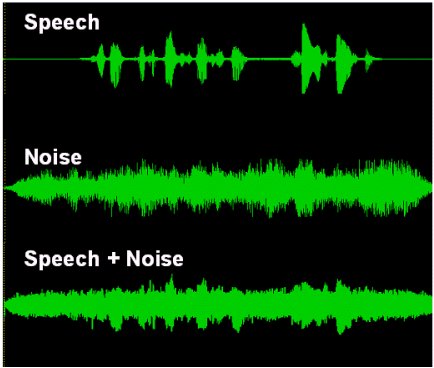
Figure 1: Speech in quiet, cafeteria noise, and speech imbedded in cafeteria noise at +5 dB S/N. The deep modulations of speech in quiet are lost when imbedded in noise even though speech is still present. Modulation detection systems will likely recognize this mixed signal as noise.
The Voicefinder takes a different approach to detecting speech. Speech energy is distributed across the full bandwidth of the hearing aid, but the pattern of energy in different frequency regions is precisely timed with the periodic action of the vocal folds (fundamental frequency). The Voicefinder searches for this precisely timed, synchronous pattern of energy in the four high frequency bands (see Fig. 2). This is a robust speech detection system that can operate all the way down to 0 dB S/N and beyond. Whenever speech is detected, the system provides amplification and compression characteristics that have proven to be highly successful for patients with sensorineural hearing loss ("Speech Mode"). Only when it is clear that no speech is present will the device transition into the Comfort Mode, reducing the long-term fatigue of using amplification.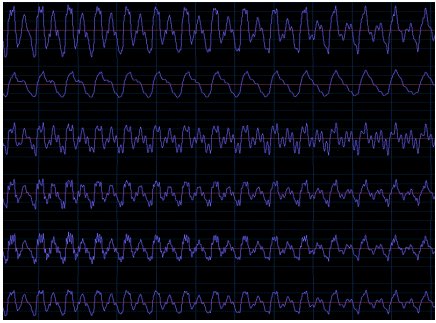
Figure 2: The waveform of a section of the vowel /o/ presented unfiltered (upper panel) and filtered in the following bands: 1-250 Hz. (panel 2), 1500-2500 Hz. (panel 3), 2500-3500 Hz. (panel 4), 3500-4500 Hz. (panel 5), and 4500-5500 Hz. (panel 6). Notice how the energy pattern is precisely locked in time across the high frequency bands and is driven by the fundamental frequency (panel 2).
Annoyance and Hearing Aids
Wearing a hearing aid all day long is often described by users as being annoying and fatiguing (Schum, 2001). It is not hard to understand why. Due to the threshold loss, patients need to constantly listen to sound at elevated levels in order to receive whatever speech information is available. Even though the sound may be limited below the listeners Uncomfortable Loudness Level, the overall dose of sound throughout the day provides overall stimulation that is likely to be simply tiring. The Voicefinder system is designed to reduce the overall amount of stimulation throughout the course of the day by shifting into the Comfort Mode (see Fig. 3) when speech is not present (which is a surprisingly significant proportion of the day for many people).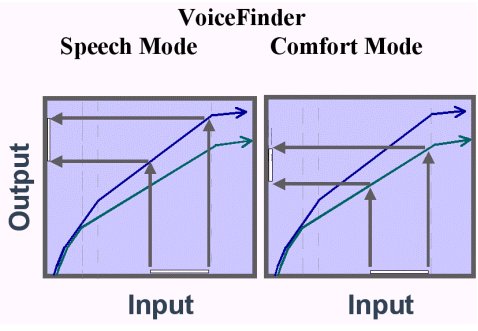
Figure 3: An example of the input/output function for Adapto in the Speech (left panel) and Comfort (right panel) modes. The main difference between the Modes is a drop in the amount of gain for high level input. In addition, the kneepoint of compression drops to 45 dB SPL.
What are Open Ear Acoustics?
Adapto incorporates a unique, dual-function feedback cancellation system to significantly improve the feedback-free range of the device. The combination of fast and slow-acting components in the Dynamic Feedback Cancellation system allow for rapid identification and elimination of feedback without the noticeable sound quality degradation common in older systems. Importantly, and unique to Oticon DSP technology, the processing time through Adapto is very short (3 ms). This fast processing time allows us to mix processed sound with direct sound entering through a large vent without any annoying echo effects common to many other digital systems with longer processing times.
Open Ear Acosutics refers to the combination of a state-of-the-art feedback cancellation system and the fast processing time, which allows us to actively prescribe venting much larger than any system in the past. In fact, the majority of users can be fit with vents of at least 3mm. The comfort of open fittings will be immediately appreciated by the patient, especially experienced users.
What is Client Focused Fitting?
Adapto and the Genie fitting system allow us to truly engage the patient as an active partner in the fitting process. We all know there are factors beyond the audiogram that affect the signal processing needs of one patient versus another. Therefore, the Adapto fitting system requires that the patient provide "input" to the fitting process. Their input is incorporated directly into the configuration of the device. Based, in part, on recent findings by Gatehouse (2000), the Genie software evaluates all input information and recommends one of four proprietary fitting rationales (see Fig. 4) along with specific device settings. Table 1 provides a description of the four rationales.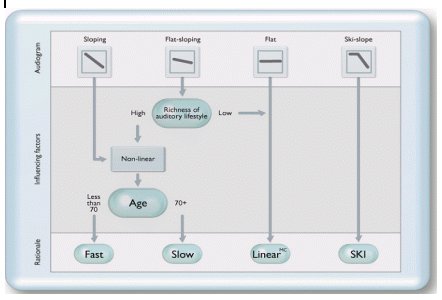
Figure 4: A flow chart showing how the Genie software uses several sources of information to settled on a recommended fitting rationale.
After the initial settings are determined, we create a "virtual listening environment" for the patient and family members so the relationship between real, everyday sounds and device function can be experienced quickly and directly. The Voicefinder and other sound processing characteristics of Adapto can be immediately demonstrated and evaluated, bypassing the inefficient and sometimes frustrating process of trying to describe sound. By creating a virtual listening environment, the patient and family will see how the device settings have been crafted to reflect the individual perception of sound. We have created a modern, interactive system that advanced technology amplification deserves.
How will the hearing aid fitting be affected?
There is no doubt the introduction of DSP to commercially available amplification has opened up new technical possibilities in device design and sound processing. However, changing the focus of the fitting process from problem solving to success building offers a significant opportunity to make the experience of receiving hearing aids highly rewarding and beneficial.
CASE STUDY: MF
MF was one of the first patients fit with Adapto in the U.S. Her experience highlights several of the key aspects of this new product.
MF was a previous satisfied monaural user of multi-channel, non-linear amplification. Initially, she tried binaural amplification, but the occlusion effect with both ears closed-up was too great. In addition, feedback occurred when using the telephone. Therefore, she settled for returning the left hearing aid and just using one hearing aid in order to reduce the negative side effects of amplification. She learned to get along on the phone using her unaided, unoccluded left ear.
Early this past fall (2001) she was fit with an Adapto in-the-canal hearing aid in her right ear. She spontaneously commented, "What a remarkable difference, there was no tinny sound and I didn't sound like I was in an echo chamber." In addition, she reported increased clarity and comfort even in noise with this instrument. Given these initial positive experiences, a second Adapto was made to complete her binaural fitting. For the past two months, she has been using a binaural set of Adapto in-the-canal instruments. She couldn't be more pleased with these "natural sounding hearing aids" as she describes them.
From an audiologist's viewpoint, the fitting was pretty straightforward. Her hearing loss is a bilateral sloping mild-to-moderate sensorineural hearing loss. Hearing aids were fit to target with the Fast rationale (see Table 1). Minor gain adjustments have been made in follow-up based on her sound quality preferences.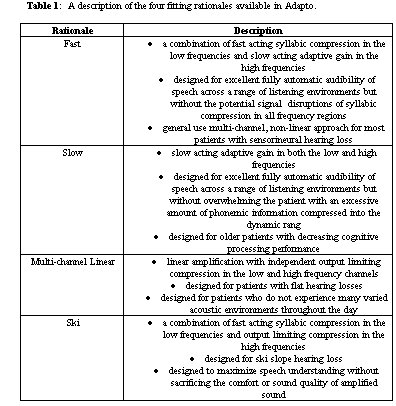
Summary:
There is no doubt that many new patients question their decision to pursue amplification when their initial perception is negative. Overcoming a bad first impression is very difficult. Our goal in designing Adapto was to implement strategies allowing earlier and more prominent successes, from the very first fitting. Eliminating and reducing initial negative perceptions is far more achievable with the Adapto, than with previous circuits.
Experienced patients who have dealt with occlusion and feedback, such as MF, will perceive immediate benefit and improvements with Adapto circuitry. Trying to balance between speech clarity and long term comfort will no longer be necessary. Annoyance will be less of an issue. The confidence in the professional fitting the devices will be higher from the start. The multiple benefits of the Adapto will significantly and positively affect our profession, the patients we serve, and their listening experience.
References
Dillon, H., Birtles, G. & Lovegrove, R. (1999). Measuring the outcomes of a national rehabilitation program: Normative data for the Client Oriented Scale of Improvement (COSI) and the Hearing Aid User's Questionnaire (HAUQ). Journal of the American Academy of Audiology, 10, 67-79.
Gatehouse, S. (2000) Auditory ecology and its influence on the benefits of non-linear signal processing in hearing aids. Paper presented at the Oticon Human Link Conference, Ft. Lauderdale, November.
Kochkin, S. (2000). MarkeTrak V: "Why my hearing aids are in the drawer": The consumer's perspective. Hearing Journal, 53, 34-42.
Schum, D. (2001). Annoyance and hearing aids. Audiology Online, January 17, 2001.
/audiology/newroot/articles/arc_disp.asp?id=247&catid=1
For more information on Oticon click here.
Click here to visit the Oticon website.


